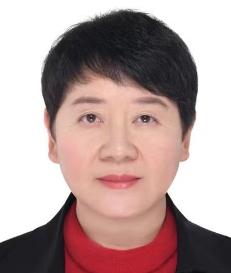
Prof. Wenjing Tian
Jilin University, China
Title: In situ 3D visualization of polymer phase separation structures
Abstract:
The identification and visualization of the phase structure of polymer blends is critical to understanding the intrinsic structure and dynamics of polymer blends [1]。However, direct optical observation of individual component phases in dense materials is still a challenge [2-3]. We have designed and synthesized 2-(4-bromophenyl)-3-(4-(4-(4-(diphenyl amino) phenyl) fumaronitrile, a cyanostyrene-derivative with special fluorescence properties as the probe. Based on the different aggregation states formed between the probe and the polymer, 3D fluorescence imaging and real-time visualization of phase transition of polypropylene and polystyrene blends were realized by multi-photon laser scanning microscopy. By stretching a dumbbell sample of the polymer under constant tension, the plastic deformation and macroscopic phase transition in the internal phase region are visualized [4]. At the same time, the visualization of phase separation structures of block copolymers is explored.
Key words: fluorescent probe, polymer phase separation, visualization.
References:
[1] Robeson, L. Historical Perspective of Advances in the Science and Technology of Polymer Blends. Polymers 2014, 6, 1251–1265.
[2] Mullin, N.; Hobbs, J. K. Direct Imaging of Polyethylene Films at Single-Chain Resolution with Torsional Tapping Atomic Force Microscopy. Phys. Rev. Lett. 2011, 107, 197801.
[3] de Campo, C.; Dick, M.; Pereira dos Santos, P.; Haas Costa, T. M. Zeaxanthin Nanoencapsulation with Opuntia monacantha Mucilage as Structuring Material: Characterization and Stability Evaluation Under Different Temperatures. Colloids Surf. 2018, 558, 410–421.
[4] Wu, Z.; Zhang C.Y.; Zhu Y.L.; Lu Z.Y.; Liu H.; Xu B.; Tian W.J. Visualization of Macrophase Separation and Transformation in Immiscible Polymer Blends. CCS Chem. 2023, 5, 718–728.
Biography:
Wenjing Tian is currently a professor in College of Chemistry at Jilin University. She received her bachelor's degree in Physics at Jilin University in 1988 and Ph.D. in Polymer Physics at Changchun Institute of Applied Chemistry, Chinese Academy of Sciences in 1993. She later worked as a postdoc in Jilin University collaborating with Prof. Jiacong Shen. In January 1996, she joined Jilin University and launched her own research group. She has been engaged in organic polymer material science research for a long time, and has made important innovative achievements in the fields of organic solar cell materials and devices, high solid-state fluorescence quantum efficiency organic light-emitting materials, organic chemistry and biosensing materials, stimulus-responsive organic light-emitting materials, supramolecular assembly of organic light-emitting materials, and physical processes of organic photoelectric functional materials. She has published more than 270 papers in SCI journals, cited more than 7,000 times, and obtained 11 Chinese invention patents. She has presided over a number of key/surface projects of the National Nature Foundation. In 2002, as the main participant, the project "Basic Research on new organic electroluminescent materials" won the first prize of Natural Science Award in universities of the Ministry of Education; in 2014, the project "Basic Research on organic polymer optoelectronic functional materials" won the first prize of Natural Science Award of Jilin Province Science and Technology Award.